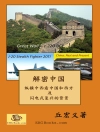This book explores an alternate history of the power and agency of 30 Hungarian queens over 400 years by a rigorous examination of the material culture connected with their lives. By researching the objects, images, and spaces, it demonstrates how these women expressed and displayed their power. Queens used material culture and space not only to demonstrate their own power to a wide, international audience, but also to consolidate their own position when it was weakened by external circumstances. Both the public and private image of the queen factors significantly in understanding in her own role at the strongly centralized Hungarian court, and, moreover, how her position and person strengthened and complemented that of the king.
表中的内容
1. Introduction.- 2. The Beginnings of the Hungarian ‘queendom’ (c. 1000-1090).- 3. Stones and bones and the queens of the twelfth century (1097-1193).- 4. The “office” of the queen begins (1172-1233).- 5. The second foundresses (1235-1295).- 6. Long widowhoods (1296-1380).- 7. Regent and Regnant (1370-1395).- 8. Conclusions.
关于作者
Christopher Mielke is Executive Director of the Beverly Heritage Center in West Virginia, USA. From 2017–2018, he was a Visiting Assistant Professor at Al-Quds Bard College for Arts and Sciences in East Jerusalem. He received his Ph D in Medieval Studies from Central European University in 2017.












